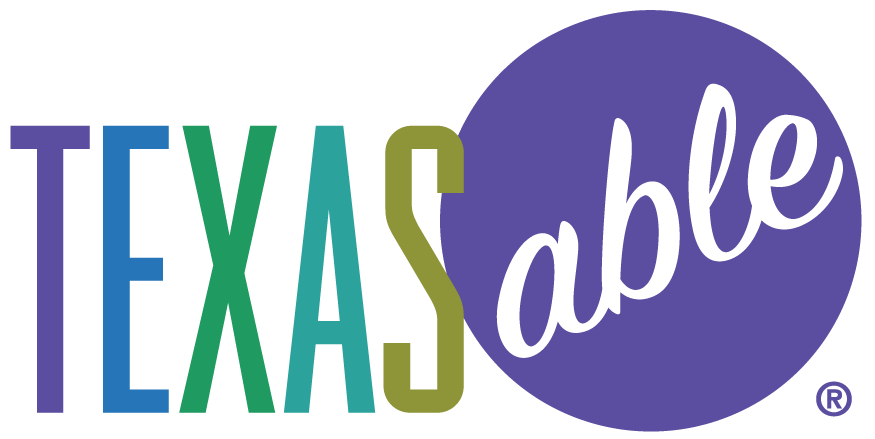Withdrawals
Account owners can log in to the online portal to request a withdrawal to pay bills directly from the Account by electronic transfer or check, or to move funds from the Account to a personal checking or savings account and pay Qualified Disability Expenses from the personal account. Payment by ACH typically occurs within 3-5 business days of an online request. Payment by check typically occurs within 7-10 business days of an online request. You should carefully read the Fees and Expenses section of the Program Disclosure Statement for information on ACH and Check fees.
Withdrawal Fees
The Program charges $5 for each withdrawal by check and $1 for each ACH withdrawal in excess of two per month.
Qualified Withdrawals
A Qualified Withdrawal is a withdrawal that is used to pay Qualified Disability Expenses of the Designated Beneficiary of the Account. Like funds in and contributions to ABLE accounts, Qualified Withdrawals are not included in the Designated Beneficiary’s taxable income or counted as income in eligibility determinations for SSI or Medicaid. Note that SSA will apply normal SSI resource counting rules and exclusions to assets or other items purchased with funds from an ABLE account.
Non-Qualified Withdrawals
Non-Qualified Withdrawals are withdrawals used for any expense that is not a Qualified Disability Expense, or Rollover or Program-to-Program Transfer, and any withdrawals made while the Designated Beneficiary no longer meets the requirements of an Eligible Individual. Non-Qualified Withdrawals may negatively impact benefit eligibility and benefits for SSI, SSDI, and Medicaid. Non-Qualified Withdrawals will be subject to income tax on any earnings, and the Additional 10% Tax on any earnings, unless an exception applies.
Supplemental Security Income (“SSI”)-Countable Withdrawals
For a Designated Beneficiary whose financial eligibility is determined using SSI-based methodologies (as opposed to Modified Adjusted Gross Income (MAGI)-based methodologies), a withdrawal from an ABLE account may be countable as a resource only if (1) it is retained beyond the month in which the withdrawal is made and (2) it is used for a Non-Qualified Disability Expense in that or a subsequent month. ABLE account withdrawals used for expenses other than Qualified Disability Expenses will be counted in the month the expenditure is made.
Documentation for Withdrawals
The Designated Beneficiary is solely responsible for determining if a withdrawal is a Qualified Withdrawal or a Non-Qualified Withdrawal and for applicable federal and state benefit and tax consequences. It is also the responsibility of the Designated Beneficiary to maintain records necessary to respond to any questions from the IRS, SSA or other state or federal agencies related to withdrawals.
You should maintain good records on how you spend your Texas ABLE Program funds, including bank records, invoices and receipts. While we do not require documentation when you are requesting a withdrawal, you may be asked by state or federal agencies to verify your expenditures.
Temporary Holds on Withdrawals
The Program reserves the right not to allow withdrawals of funds from an Account for up to:
- seven business days following receipt of contributions by check if that contribution is needed to fund the withdrawal;
- five business days following receipt of contributions electronically if that contribution is needed to fund the withdrawal;
- ten business days following a change of address of record for either the Authorized Legal Representative or the Designated Beneficiary; and
- fifteen business days following a change in Authorized Legal Representative.
Rollovers and Program-to-Program Transfers
Withdrawals may also include Rollovers or Program-to-Program Transfers from the Texas ABLE Program to another qualified ABLE program or to an ABLE account for a Member of the Family who also is an Eligible Individual. You should contact the ABLE program that is receiving the transfer to determine appropriate procedures to follow and determine if they will charge any fees.
Medicaid Considerations
Under Section 529A of the IRC, following the death of the Designated Beneficiary, any state may be required to file a claim against the Designated Beneficiary’s estate or the Account itself for the amount of the total medical assistance paid for the Designated Beneficiary under the state’s Medicaid plan after the establishment of the Account (or any ABLE account from which amounts were rolled over or transferred to the Account). Such claims are sometimes referred to as “recapture.” The amount paid in satisfaction of such a claim is not a taxable withdrawal from the Account. Further, the amount is to be paid only after the payment of all outstanding payments due for the Qualified Disability Expenses of the Designated Beneficiary, including any funeral and burial expenses and is to be reduced by the amount of all premiums paid by or on behalf of the Designated Beneficiary to a Medicaid Buy-In program under the state’s Medicaid plan.
Procedures for filing claims may vary from state to state. The Designated Beneficiary, Authorized Legal Representative, and executors and administrators should consider seeking legal counsel on the applicability of, and any available exceptions to, Medicaid recapture under applicable state law and regulation.
Reporting of Withdrawals
Withdrawals will be reported annually to the IRS on Form 1099-QA. The Program is required to report monthly to the SSA on all Account balances and activity.
